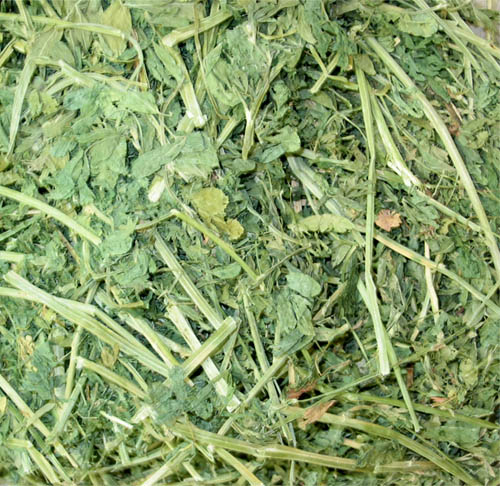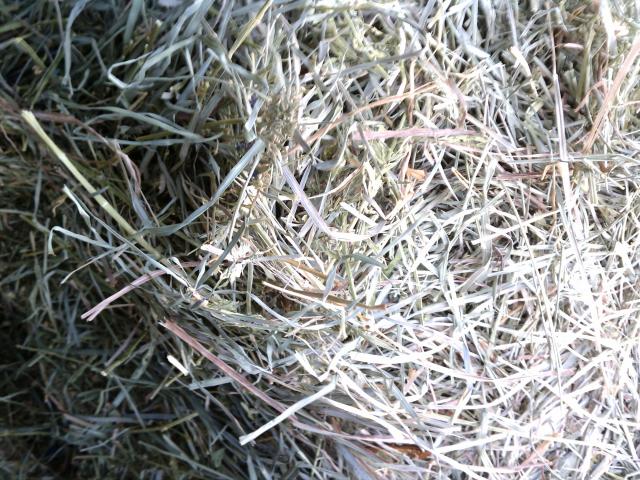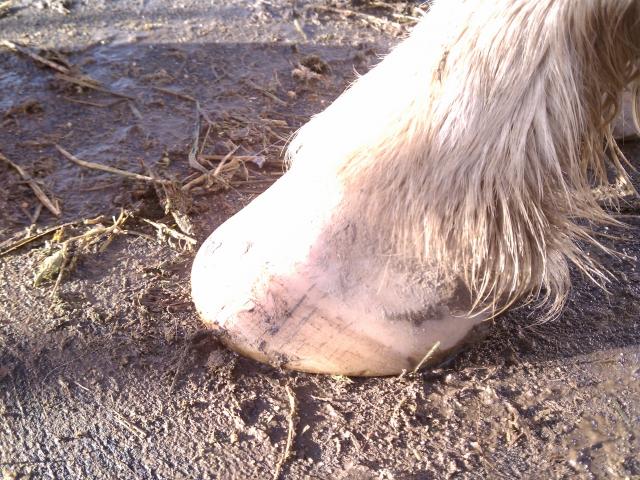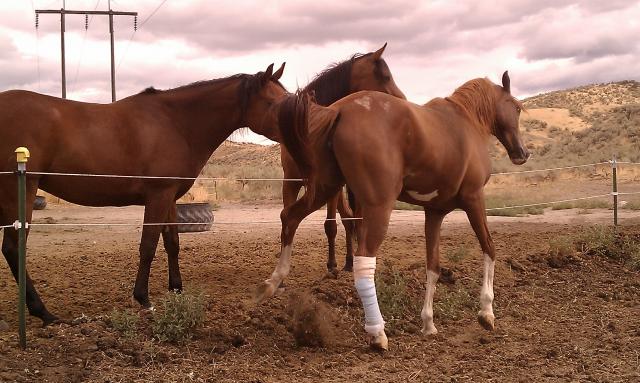Well this is going to be my last post in the Winter Sore Foot Series. Last week I talked about the importance of exercise throughout the winter, and the week before we addressed the perils of frozen ground. Today I wanted to talk about the potential dietary changes our horses might face through the cold winter months and as a side note I also wanted to encourage people to really consider what has been going on inside your horse the months previous.
With our barefoot horses, most of us have come to consider the importance of a diet low in starches and sugars. There have been many posts written by those more qualified than myself in explaining the why’s and the how’s of high sugar and starch in the diet, one in particular that I enjoyed was by our good friend from Oz, Duncan, in Carbs: The Good, The Bad And The Ugly. Our horses eat a high quality grass hay with a bit of alfalfa mixed in throughout the year. We also keep a supply of straight alfalfa around to take to rides, supplement the small group of “skinnies,” (which none of mine belong to!) and to feed in conjunction with the regular hay with the temperature rapidly falls.


I personally don’t have a problem with this as long as the alfalfa is fed in moderation to horses that don’t exhibit hoof sensitivity related to diet, but for a while there our horses were being fed quite a bit of alfalfa, which could have contributed to Replika’s sore feet. Although it is difficult to know exactly WHAT is causing the problem! One important thing to realize when feeding a “hotter” feed is that, again, exercise is *really* important, for more reasons that one!
If you are in the position where you don’t have sole control of your horses’ primary diet, take a look at the things you do have control over. During a time where calories might be necessary to increase, consider the following; do you feed beet pulp? Make sure to double rinse! A small-mesh wire trash basket makes an excellent strainer for beet pulp year round. Do you feed supplemental concentrates or grains? Make a point to know what you are feeding, and the approximate NSC value of your feed to ensure you aren’t unintentionally loading your horse full of starch and sugar. Another thing to consider is that horses coming off a grass pasture-diet or even a partial grass pasture-diet to exclusively hay could potentially have a vitamin/mineral deficit of some sort. A balanced vitamin/mineral supplement could be a real asset to many horses out there and should be considered year-round.
During the period of my mare’s very sore feet, I started looking outside of the box. While it was obvious the frozen ground was the main contributing factor to her discomfort, something else was nagging in the back of my mind. One day after trimming her feet and thinking to myself, something just doesn’t look right, it hit me. Plain as day halfway down her feet was a wicked nutrition line. I hadn’t noticed it before as they were standing ankle deep in snow. Most horses get these familiar “rings” that run parallel to the coronary band, and are great indicators of dietary, stress and other insults the horse has incurred throughout the past months. Not only was there a huge line around her feet, the hoof wall under the line was showing a different angle, which usually suggests some white line separation and/or damage.

The line looks faded and insignificant in this photo when in reality it’s quite impressive. I couldn’t quite capture the change in angle under the line, but I assure you it’s there. Luckily exercise stimulates hoof growth and hopefully we will have a new strong foot when that line grows out.

I hurried out the next morning and immediately could tell something was wrong. I swear my stomach dropped out of my body when I saw an unfamiliar swollen elephant leg replacing the fine bone of my mare. We immediately took her to the clinic where we ran diagnostics such as xrays and a joint tap, to ensure there were no bone chips or that a joint infection hadn’t set in. She was diagnosed with a nasty case of cellulitis and for the next ten days was given IV antibiotics, was set in a heavy bandages and was cold-hosed daily. Due to the massive swelling, the wound grew and grew and was eventually three sizes what it had been. After bringing her home, she needed every-other-day bandage changes for weeks. We also needed to very slowly bring her back to work, as it was very important to stretch out the tendons that had contracted due to her constantly resting that leg. I worried constantly about her other foot and the chance of laminitis due to bearing most of the weight for that amount of time and the massive amount of drugs that were streaming through her system.

One of the less graphic wound pics. The first was two weeks after the initial injury, the second was fourteen days after the first, which made the wound one month old.

In her typical fashion, Replika showed the boys just what she thought. She remained wrapped for about a month after bringing her home.
It’s amazing to think about just how sensitive these creatures are, as well as exactly how tough they can be. For having such fragile systems, I would say their ability is measured in heart. While sometimes I envy those who slap shoes on their horse every 6-8 weeks, keep them tucked away, clean and slick, into a stall year round and provide oftentimes cheaper nutrition to their horses, the feeling is fleeting as I realize just how much I have learned in the past few years, which all started with keeping my horses barefoot. I wouldn’t have it any other way. And now, we focus on keeping her trimmed correctly and boot her when necessary until the damaged structure grows out. Shouldn’t be too much longer considering spring is coming!!!
Hope you have sunshine to enjoy!
~ Amanda Washington
SW Idaho




